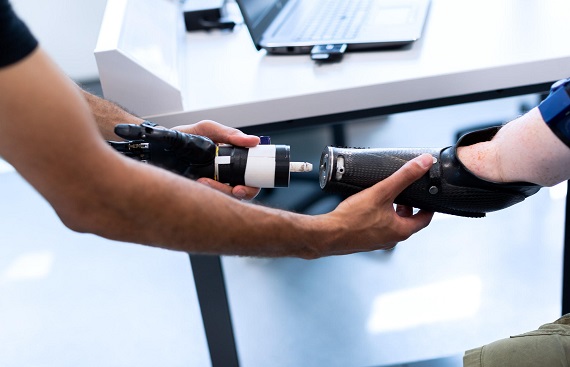What Are Robotic Exoskeletons

Robotic exoskeletons are usually the thing of sci-fi films and dystopian novels. But now, they're a very real technology that may soon change the way humans live and work forever.
A robotic exoskeleton is designed to mimic, augment, or enhance the human body's movements. It is a highly advanced bodysuit that is capable of achieving levels of strength and mobility that the human body simply cannot.
By providing incredible support to the person wearing the exoskeleton, they can perform tasks that were once impossible. This is why their use is set to become particularly important for the disabled and those recovering from severe limb injuries.
Robotic exoskeletons are also being considered for a wide range of applications in the manufacturing and construction industries. They're even being considered for use in the military and for dangerous rescue operations.
How Do Robotic Exoskeletons Work
Robotic exoskeletons are battery-operated devices. They’re powered from within using a powerful, compact, and safe drives such as Elmo's servo drive series. These drives are energy efficient, working at both high and low voltage to operate the exoskeleton.
The servo drives are capable of generating huge amounts of torque but, at the same time, are incredibly light, making them highly effective portable devices. The drives are used for reliable motion of the exoskeletons providing increased strength, mobility, and endurance for the user.
The most practical application of robotic exoskeletons right now is for rehabilitation. Those who have suffered severe injuries that require assistance to get their body up and moving again are set to benefit significantly from this technology.
Statistics About Robotic Exoskeletons
The global wearable robotic exoskeleton market is projected to reach $5.4 billion by 2028. The market for exoskeletons is set to exponentially grow over the next few decades at a 45.3% compound annual growth rate (CAGR).
The majority of this market is expected to comprise of exoskeletons for rehabilitation in the health sector.
In 2018, Europe dominated the wearable robotic exoskeleton market with a share of 39%. However, recent analysis has shown that Asia-Pacific is set to see tremendous growth for this technology.
Of all the different types of exoskeletons being produced, powered exoskeletons are predicted to have the highest growth potential.
Turning Humans into Robots
Cyborgs and robots have dominated our sci-fi and fantasy entertainment for over 100 years, but now it is slowly becoming a reality. Smartwatches, glasses, and other wearable tech are just the tip of the iceberg. Soon, humans will start to merge with technology.
Advanced robotic exoskeletons promise to not only help rehabilitate the severely injured but also enhance the average human experience. This is the start of our cyborg journey and possibly the next stage of our evolution as a species.
In the future, humans may be able to perform tasks that were once impossible. Our exoskeletons suits will help us to move, build, and work like never before. We have all feared robots taking our jobs, but many of us have never considered merging with the robots to work in harmony.
If an automated robot with AI is unable to make important choices based on emotion, integrating a human with a robot could help bridge that gap. This could open the door to all manner of incredible feats.
The Future Promise of Lower Limb Robotic Exoskeletons
The deterioration of our lower limbs is inescapable with older age. As we get older, we become less able to take out the everyday actions we once took for granted. Robotic exoskeletons are set to end this suffering for the elderly in the very near future.
With a robotic exoskeleton, the elderly could be supported in their mobility, allowing them to continue with their lives. This would let them move freely around their home, sit up, sit down, walk to the shops, or even exercise. All of this would be possible and in a safe and controlled manner.
Lower limb assistive robotic exoskeletons have the potential to transform the lives of the elderly and those with severe injuries to their lower limbs. The powered robotic exoskeleton would maintain and keep the person's limbs on the specified motion trajectory.
Millions all around the world will soon benefit from the use of lower limb robotic exoskeletons.
